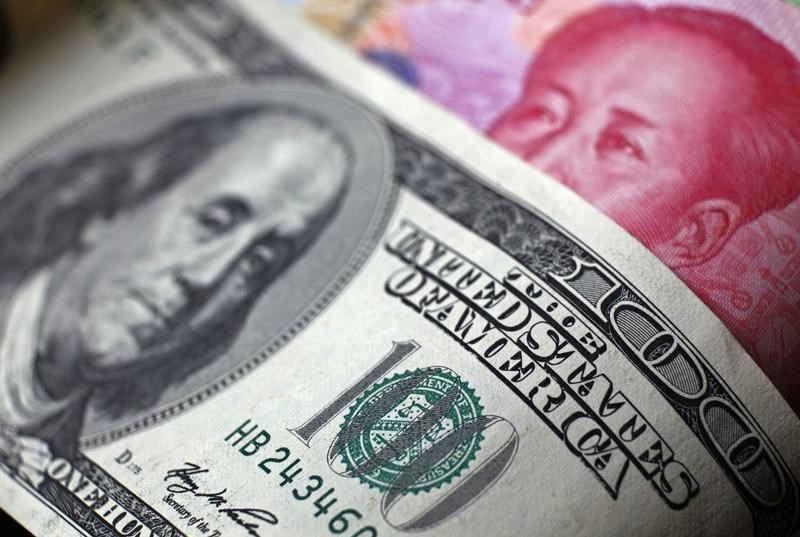Sunnybrook Health Sciences Centre selects Oracle Health for new EHR system
By Ambar Warrick
Investing.com -- Most Asian currencies fell on Friday and the dollar steadied near seven-week lows as markets speculated over how imminent a pause in interest hikes may be, although dovish signals from the Federal Reserve put most regional units on course for strong weekly gains.
The safe haven Japanese yen outperformed its peers, rising 0.5% even as data showed Japanese consumer inflation eased as expected in February, lending further credence to the Bank of Japan’s ultra-dovish stance.
Japanese manufacturing activity also remained in contraction territory through March, preliminary data showed. Worsening risk appetite put the yen on course to add over 1% this week.
The Chinese yuan was the worst performer for the day, down 0.4% despite a stronger midpoint fix by the People’s Bank. Ructions in the property sector soured sentiment towards China, clouding the outlook for an otherwise strong post-COVID economic recovery.
A hotly-anticipated debt restructuring plan by beleaguered property developer China Evergrande Group (HK:3333) saw little fanfare, given that it proposed some investors take an up to 98% haircut on their bond holdings.
Still, the yuan and most other Asian currencies were set to close the week higher, aided largely by a sharp drop in the dollar as fears of a U.S. banking crisis saw traders question whether the Federal Reserve had enough economic headroom to keep raising interest rates.
The South Korean won fell slightly on Friday, but was the best performer this week with a 1.5% bounce, while the Malaysian ringgit led gains in Southeast Asia with a 1.3% jump this week.
Malaysian inflation also read slightly higher than expected for February.
The Fed hiked interest rates as expected this week, and said it will continue to act against high inflation. But a change in the bank’s language suggested a potential pause in interest rate hikes, due to pressure on the banking sector.
The dollar steadied from recent losses on Friday, with the dollar index and dollar index futures trading flat. But the greenback was set to lose over 1% this week.
Still, uncertainty over when exactly the Fed could pause its rate hikes kept sentiment subdued, while fears of a U.S. economic slowdown also kept investors wary of risk-driven Asian assets.
Weak economic signals also weighed on Asian units on Friday. The Singapore dollar fell 0.1% as industrial production shrank far more than expected in February.
